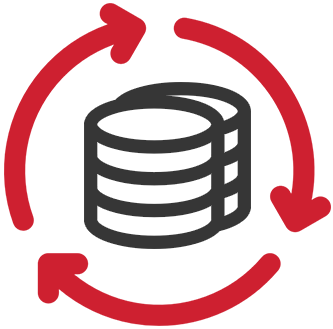With the release of Oracle 21c is time for us to start to check the new features. Besides 21c is an innovative release, it shows what we will use in the future in daily activities. For Data Guard and Broker one new feature is the PREPARE DATABASE FOR DATA GUARD that adjusts the database and some parameters to become primary. Release notes can be checked here.
Tag Archives: Broker
ZDLRA, Multi-site protection – ZERO RPO for Primary and Standby
ZDLRA can be used from a small single database environment to big environments where you need protection in more than one site at the same time. At every level, you can use different features of ZDLRA to provide desirable protection. Here I will show how to reach zero RPO for both primary and standby databases. All the steps, doc, and tech parts are covered.
You can check the examples the reference for every scenario int these two papers from the Oracle MAA team: MAA Overview On-Premises and Oracle MAA Reference Architectures. They provide good information on how to prepare to reduce RPO and improve RTO. In resume, the focus is the same, reduce the downtime and data loss in case of a catastrophe (zero RPO, and zero RPO).
Multi-site protection
If you looked both papers before, you saw that to provide good protection is desirable to have an additional site to, at least, send the backups. And if you go higher, for GOLD and PLATINUM environments, you start to have multiple sites synced with data guard. These Critical/Mission-critical environments need to be protected for every kind of catastrophic failure, from disk until complete site outage (some need to follow specific law’s requirements, bank as an example).
And the focus of this post is these big environments. I will show you how to use ZDLRA to protect both sites, reaching zero RPO even for standby databases. And doing that, you can survive for a catastrophic outage (like entire datacenter failure) and still have zero RPO. Going further, you can even have zero RPO if you lose completely on site when using real-time redo for ZDLRA, and this is not written in the docs by the way.
Observer, Quorum
This article closes the series for DG and Fast-Start Failover that I covered with more details the case of isolation can leverage the shutdown of your healthy/running primary database. The “ORA-16830: primary isolated from fast-start failover partners”.
In the first article, I wrote about how one simple detail that impacts dramatically the reliability of your MAA environment. Where you put your Observer in DG environment (when Fast-Start Failover is in use) have a core figure in case of outages, and you can face Primary isolation and shutdown. Besides that, there is no clear documentation to base yourself on “pros and cons” to define the correct place for Observer. You read more in my article here.
In the second article, I wrote about one new feature that can help to have more protected and cover more scenarios for Fast-Start Failover/DG. Using Multiple Observers you can remove the single point of failure and allow you to put one Observer in each side of your environment (primary, standby, and a third one). You can read more in my article here.
In this last article, I discuss how, even using all the features, there is no perfect solution. Another point is discussing here is how (maybe) Oracle can improve that. Below I will show more details that even multiple observers continue to shutdown a healthy primary database. Unfortunately, it is a lot of tech info and is a log thread output. But you can jump directly to the end to see the discussion about how this can be improved.
